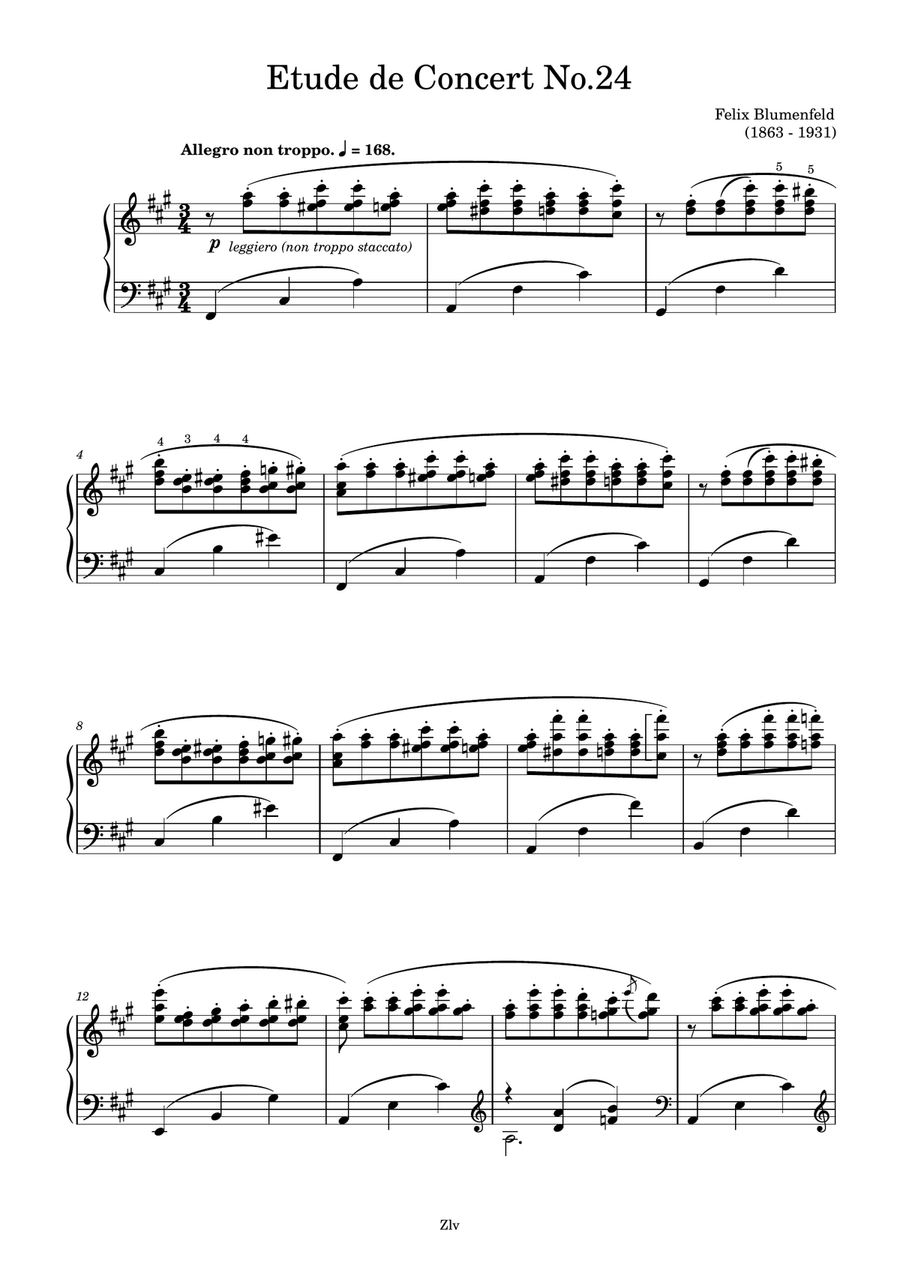Piano Solo - Level 5 - Digital Download SKU: A0.1494322 Composed by Felix Blumenfeld. Arranged by Zellev. 19th Century,Classical,Contemporary,Contest,Festival,Romantic Period. Score. 11 pages. Zellev Music #1070918. Published by Zellev Music (A0.1494322). Key Signature: F? MinorTime Signature: 3/4Tempo: Allegro non troppo (not too much, also mind the sustained/connected stacc. melody)Difficulty: Advanced (very)Felix Mikhailovich Blumenfeld (19 April 1863 [O.S. 7 April] – 21 January 1931) was a Russian composer, conductor, pianist, and teacher.He was born in Kovalevka, Kherson Governorate, Russian Empire (today - part of Kropyvnytskyi, Ukraine), the son of Mikhail Frantsevich Blumenfeld and the Polish Marie Szymanowska, and studied composition at the St. Petersburg Conservatory under Nikolai Rimsky-Korsakov and piano under Fedor Stein between 1881 and 1885. He then taught piano there himself from 1885 until 1918, whilst also serving as conductor of the Mariinsky Theatre until 1911.This theatre saw the premieres of the operas composed by his teacher and mentor Rimsky-Korsakov, and he was also the conductor at the Russian premiere of Wagner's opera Tristan und Isolde.In 1908, he conducted the Paris premiere of Modest Mussorgsky's opera Boris Godunov.From 1918 to 1922, he was the director of the Music-drama school of Mykola Lysenko in Kiev, where, amongst others, Vladimir Horowitz was a pupil in his masterclasses. He returned to the Moscow Conservatory in 1922, teaching there until his death. Other famous pupils of his include Simon Barere, Maria Yudina and Maria Grinberg. He died in Moscow.As a pianist, he played many of the compositions of his Russian contemporaries. His compositions, which showed the influence of Frédéric Chopin and Pyotr Ilyich Tchaikovsky, include a symphony, pieces for solo piano, an Allegro de Concert for piano and orchestra, and lieder. His virtuoso pieces for piano in particular are enjoying something of a renaissance in recent years.He was the uncle of Heinrich Neuhaus and first cousin, once removed of Karol Szymanowski (Felix and Karol's father, Stanislaw Szymanowski, were cousins).(Wikipedia).
